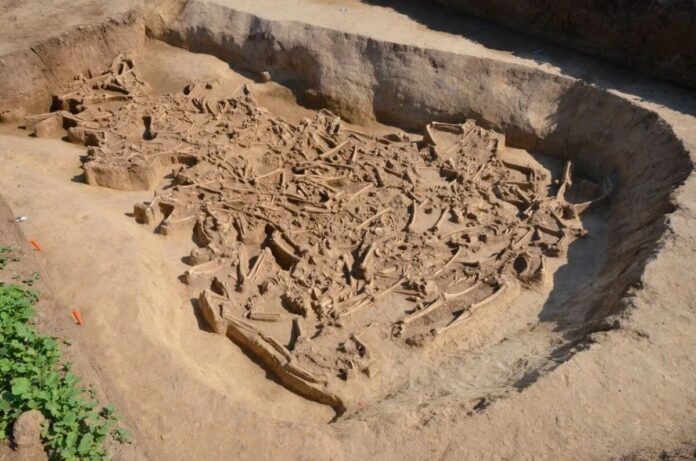Stone Age Mass Grave Discovered in Vráble
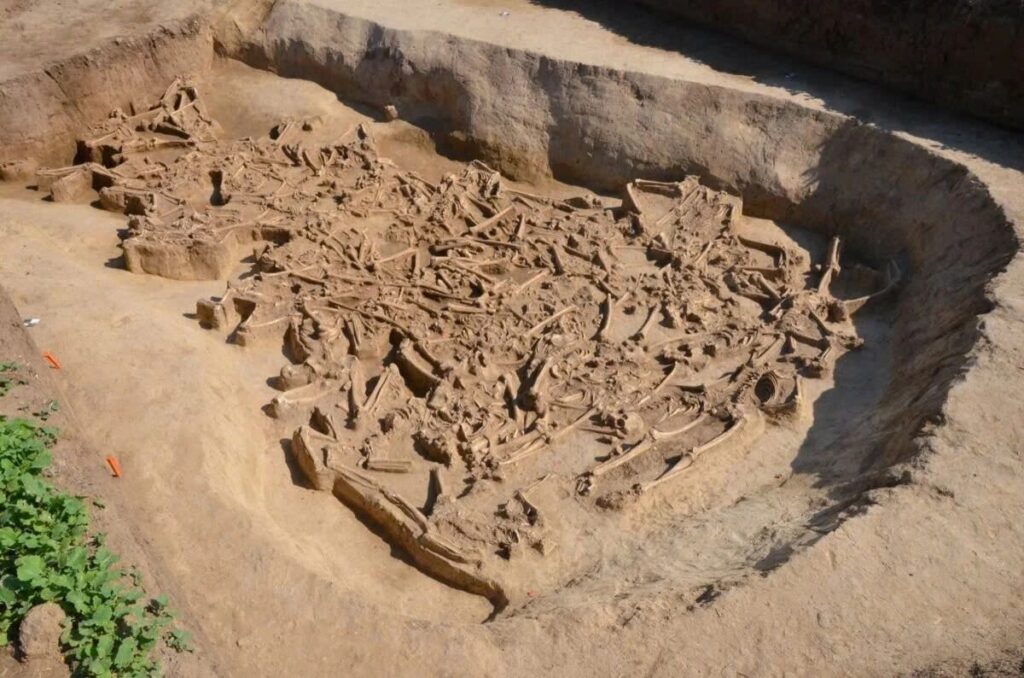
Archaeologists have made a startling discovery at one of Central Europe’s largest Neolithic settlements in Vráble, western Slovakia. A mass grave containing the remains of approximately 35 headless individuals has been unearthed, dating back to 5250-4950 BC. This find has raised intriguing questions about the social dynamics and possible ritualistic practices of early agricultural societies.
A Glimpse into Neolithic Life and Death
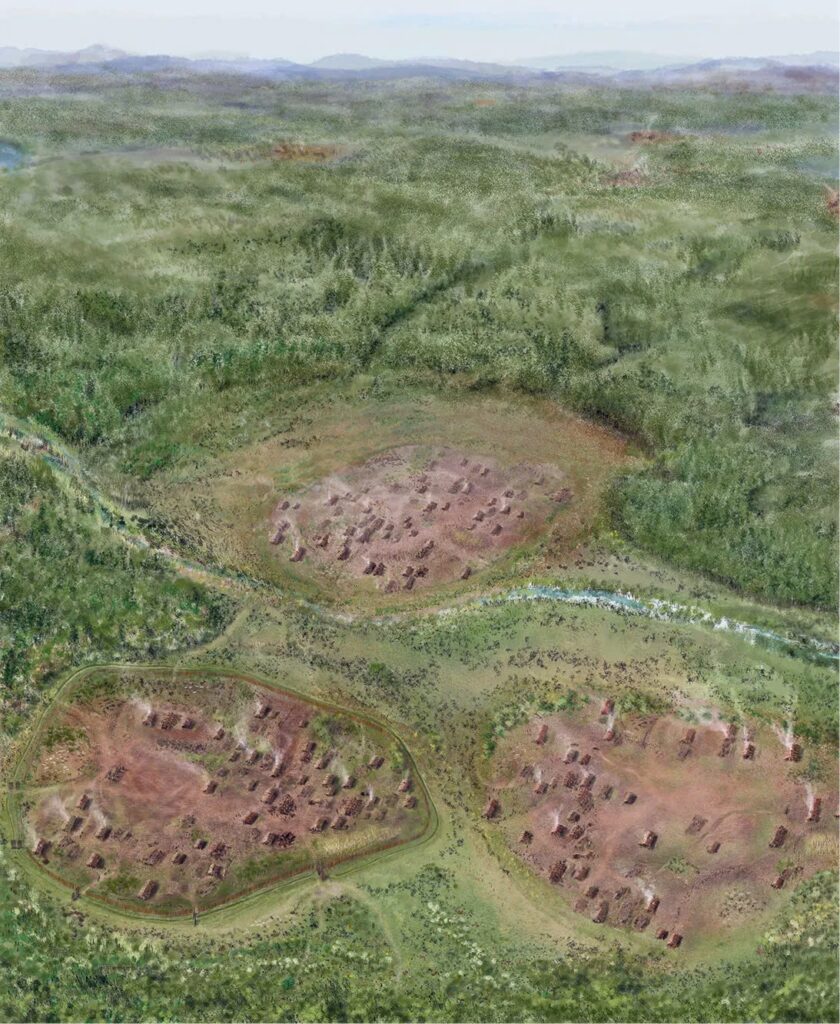
The settlement at Vráble, spanning over 120 acres, has been under investigation by a Slovak-German archaeological team for the past seven years. Their excavations and geophysical surveys have revealed a complex community with more than 300 long houses built over different occupation phases.
Fortified Settlement with a Dark Secret
One of the settlement’s three areas was fortified with a defensive ditch and palisade during its final occupation phase. It was near one of the six entrances to this fortified area that the mass grave was discovered.
The Grim Details
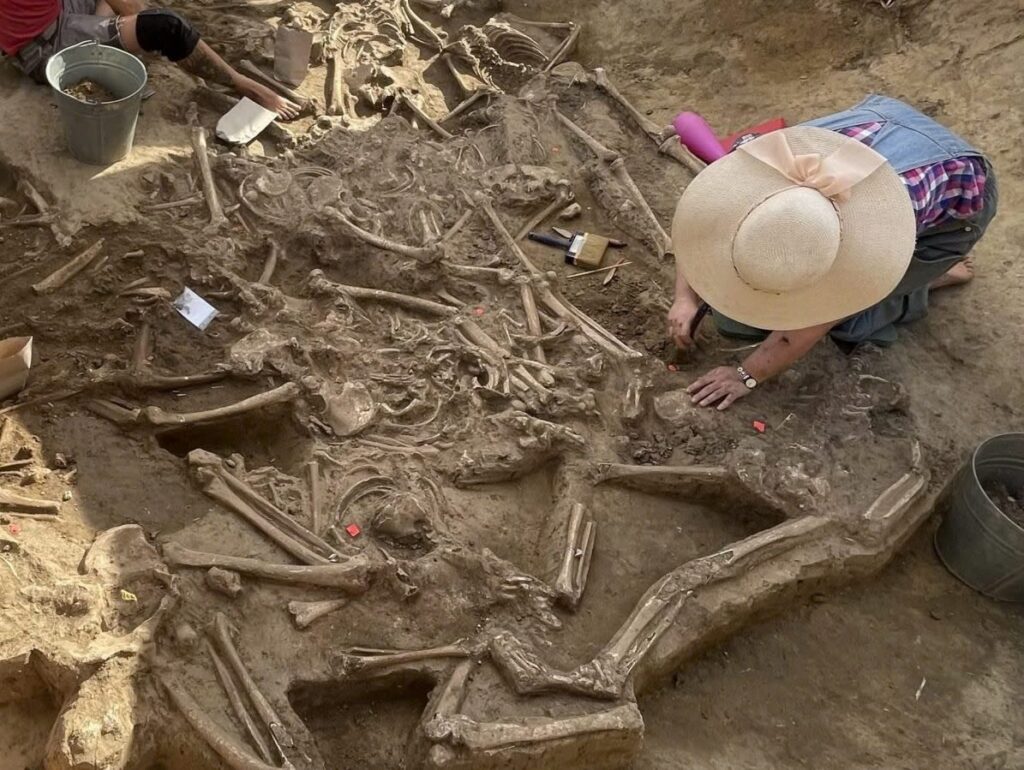
The skeletal remains were found in a seemingly random arrangement, with bodies positioned on their sides, backs, and stomachs. Men, women, and children were among the deceased, with a significant number being adolescents and young adults. Notably, all but one of the skeletons were missing their skulls, with only a single child’s skull and one mandible found among the remains.
Unraveling the Mystery
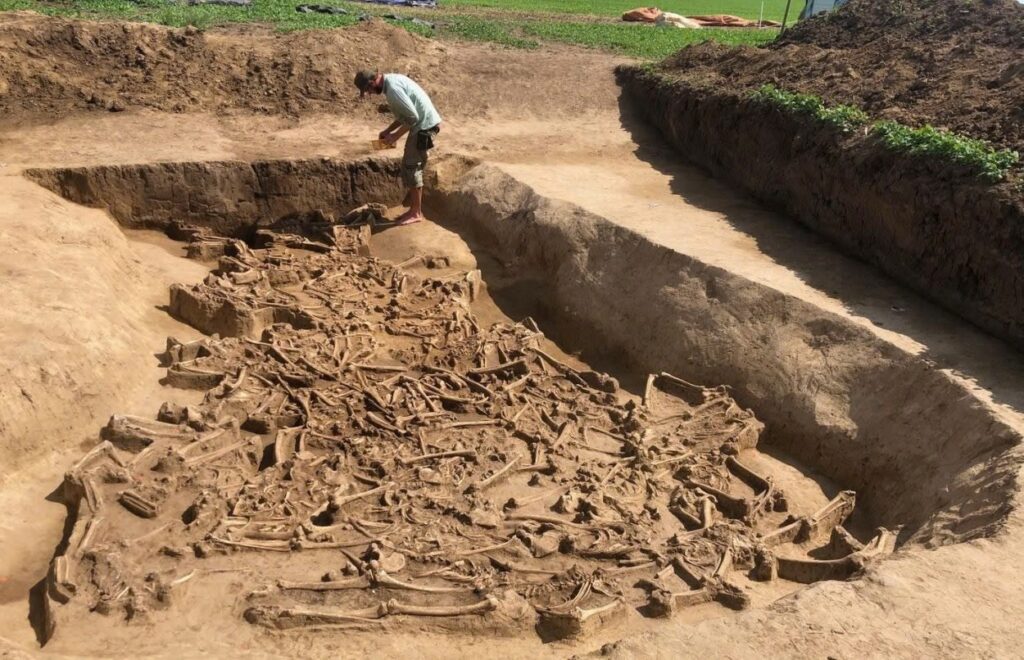
Dr. Matej Ruttkay, director of the archaeological institute, emphasized the importance of further analysis:
“Only then will we be able to answer several questions about the social categorization of the [site’s] inhabitants, probably also about the emerging social inequality in the conditions of early agricultural societies, and perhaps even reconstruct the functioning or the causes of the demise of this vast settlement.”
A Unique Glimpse into Neolithic Europe
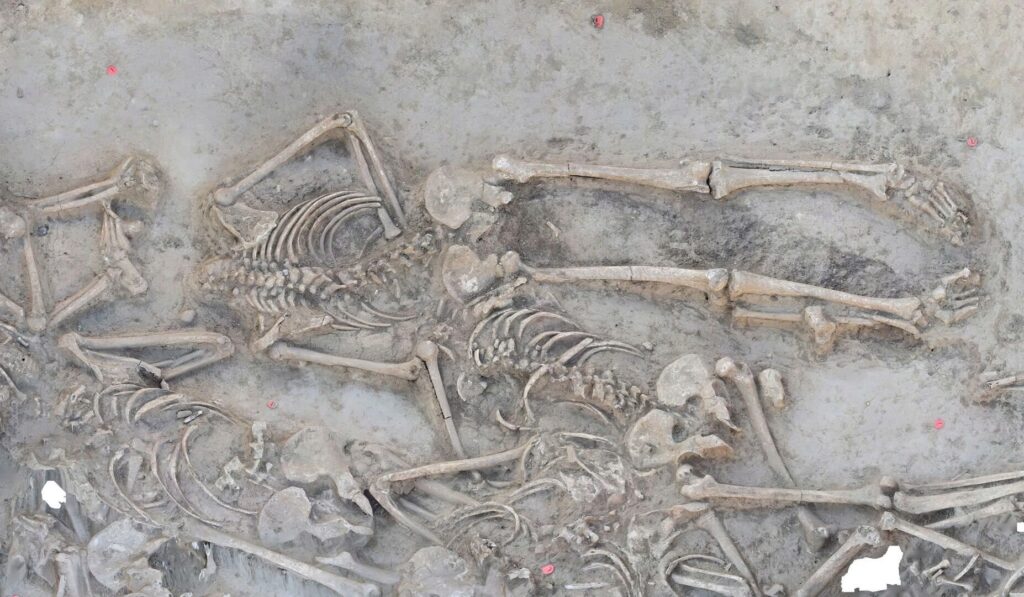
The Vráble site continues to yield exceptional findings. Ivan Cheben, head of archaeological research at SAV, noted:
“In the final stage of operation, one of the areas was fortified with a moat with six entrances to the settlement, which was doubled by a palisade. This was absolutely exceptional in Central Europe at that time.”
As researchers continue to investigate this extraordinary site, they hope to shed light on the lives, social structures, and perhaps even the mysterious demise of this ancient Neolithic community.
